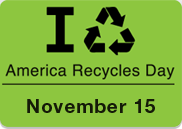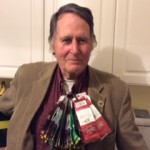MOORE’S MUSINGS
A semi-monthly feature, exclusive to NCRA News, from NCRA general counsel and board member John Moore, concerning recent legal decisions relating in some manner to Zero Waste.
BE A GOOD SAMARITAN – DONATE FOOD WITHOUT FEAR OF BEING SUED
By John D. Moore, NCRA Vice President and Legal Counsel, Henn, Etzel & Moore, Inc.
Sometimes the fruit gets rotten
And falls on to the ground
There’s a hungry mouth for every peach
As I go ramblin’ ’round boys
As I go ramblin’ ’round — Woody Guthrie
Among the many reasons Woody Guthrie would have heard in the 1930s to justify not providing blemished peaches to the hungry – fear of getting sued was not likely among them, but he would not be surprised to learn that it is an excuse today. The purpose of this article is to present, unambiguously and emphatically, federal law which immunizes from suit everyone who donates food in good faith without actual knowledge that it is harmful. Please clip this article and show it to any prospective donor of food – grocery, caterer, restaurant, farmers market, who expresses reluctance to donate out of fear of being sued:
UNDER FEDERAL LAW (42 U.S.C. Section 1791(c)(1)), THE DONOR (person, entity, gleaner, nonprofit) OF FOOD IN GOOD FAITH IS NOT LIABLE FOR CLAIMS THAT THE FOOD CAUSED HARM.
This law is known as the Good Samaritan Law or more specifically the Bill Emerson Good Samaritan Food Donation Act. The story of the Good Samaritan is of course a nice story from the Bible. Jesus was being quizzed by a lawyer about what Jesus meant by “love thy neighbor”. Jesus described a man who had been attacked by bandits and left for dead on the road. Two priests passed him by without giving aid. A third, from Samaria, stopped, bound the man’s wounds, put him on his own donkey, took him to an inn and paid the innkeeper to look after him. The lawyer, shrewdly catching the drift of the story, said, “He that shewed mercy on him.” Then Jesus said, “Go, and do thou likewise.”
The drafters of the federal Good Samaritan law did not possess the simplicity of the biblical expression and so it has the ifs, ands and buts, common to statutes. In the interest of legal scholarship, I present the operative statutes. The primary statute, 42 U.S.C. Section 1791 (c)(1), says:
“A person or gleaner shall not be subject to civil or criminal liability arising from the nature, age, packaging, or condition of apparently wholesome food or an apparently fit grocery product that the person or gleaner donates in good faith to a nonprofit organization for ultimate distribution to needy individuals.”
Section 1791(c) (2) applies the same protection to nonprofits that receive donated food. Section 1791(b) defines all the terms used in the broadest fashion. For example, Section 1791(b)(4) defines “food” to mean, “ any raw, cooked, processed, or prepared edible substance, ice, beverage, or ingredient used or intended for use in whole or in part for human consumption.” Section 1791(b)(10) defines “person” broadly to include all types of business organizations, thereby covering grocery and produce stores, restaurants, farmers markets, and caterers.
While the statute does not define “good faith”, Section 1791(c)(3) states that the liability shield does not apply only where the donor is guilty of “ gross negligence or intentional misconduct.” Those two terms are defined by Section 1791(b) (7) and (8) to mean:
The term “gross negligence” means voluntary and conscious conduct (including a failure to act) by a person who, at the time of the conduct, knew that the conduct was likely to be harmful to the health or well-being of another person.
The term “intentional misconduct” means conduct by a person with knowledge (at the time of the conduct) that the conduct is harmful to the health or well-being of another person.
Finally, Section 1971(d) applies the same protections to the landowners where gleaning takes place, that is, the persons “who allow(s) the collection or gleaning of donations on (their property)”
California does not have an analogous statute. Since Congress has not stated an intent to be the pre-eminent legislative authority in this area, the state of California, or any local jurisdiction, is free to enact its own legislation expanding, but not reducing, the protections of the federal law.
After all that, if you are confused, please allow me to say it again in a declarative certain fashion:
UNDER FEDERAL LAW (42 U.S.C. Section 1791(c)(1)), THE DONOR (person, entity, gleaner, nonprofit) OF FOOD IN GOOD FAITH IS NOT LIABLE FOR CLAIMS THAT THE FOOD CAUSED HARM.



